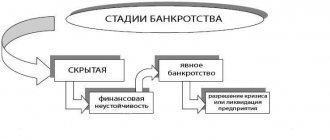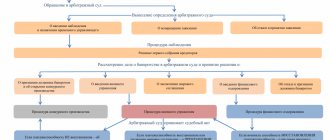Will individual entrepreneurs with tax debts be closed?
It is possible and even necessary to close an individual entrepreneur with tax and Pension Fund debts. After all, even if an individual entrepreneur does not conduct business, but is registered as an individual entrepreneur, then every year he is obliged to make contributions to the Pension Fund. You can do this yourself without the help of lawyers:
- You pay a state fee of 160 rubles;
- Fill out a simple form P26001 (you need to indicate your full name, INN, OGRN, Telephone, E-mail);
- Submit these documents to the Federal Tax Service or to the multifunctional center;
- On the 6th day the IP was closed.
Applications and a receipt for payment of the state duty can be found on the website nalog.ru.
The Federal Tax Service may refuse to close an individual entrepreneur if you, as an individual entrepreneur, have concluded employment contracts with employees and you have reported on them to the Pension Fund of the Russian Federation.
Close an individual entrepreneur before bankruptcy for free
What will happen to the debts of the individual entrepreneur after its closure?
After cessation of activity as an individual entrepreneur, a citizen is not exempt from paying business debts (debts on taxes of individual entrepreneurs, contributions to the Pension Fund). Debt collection from a closed individual entrepreneur is carried out as from an ordinary individual through the Federal Bailiff Service. The only way to write off the debts of an individual entrepreneur is through bankruptcy.
Signs of bankruptcy of an individual entrepreneur
The bankruptcy procedure for individual entrepreneurs is regulated by the provisions of No. 127-FZ, adopted on October 26, 2002. The federal law clearly defines the main signs of financial insolvency of an entrepreneur, which include:
- termination of payments on debts to creditors, and the delay is more than 3 months;
- more than 10% of the total debt has not been paid within a month;
- the amount of debts exceeds the value of the assets controlled by the entrepreneur.
An important additional condition for starting the bankruptcy procedure for an individual entrepreneur is the nature of the accumulated debts. They must be directly related to the implementation of business activities.
If the debt is related to a person’s personal purchases, for example, a mortgage, you should use the bankruptcy procedure of an individual, not an individual entrepreneur.
The decision to declare an entrepreneur financially insolvent is made by the court. The initiator of the bankruptcy procedure is either the businessman himself or any of his creditors. If the amount of debts exceeds 0.5 million rubles, the individual entrepreneur’s appeal to the judicial authorities becomes mandatory.
Conditions for opening an individual entrepreneur
There is no significant difference between the state registration of an entrepreneur before or after the bankruptcy procedure. Theoretically, a citizen has the right to even do this during the insolvency procedure. But if you open an individual entrepreneur during bankruptcy, this is guaranteed to lead to its liquidation and the imposition of a 5-year ban on repeated state registration.
So, the citizen was declared bankrupt successfully. His further actions for registering an individual entrepreneur are standard:
- Drawing up an application for registration in form P21001.
- Payment of the state fee with a receipt attached to the package of documents.
- When applying the simplified tax system - an application for transition to a simplified tax regime.
- Submitting documents to the tax service.
- Waiting for a decision - the period for consideration of the application by the Federal Tax Service is 5 working days.
- In addition, the tax authority may require a copy of the citizen’s bankruptcy resolution.
A citizen can register an individual entrepreneur when visiting the tax office or online: through the website of the Federal Tax Service or State Services. When registering online, payment of the state fee is optional.
Don’t know how to open an individual entrepreneur after bankruptcy of an individual or entrepreneur? Our lawyers will tell you everything about the procedure for recognizing the insolvency of citizens and individual entrepreneurs, and will provide comprehensive support on bankruptcy issues.
To consult with a lawyer and receive turnkey assistance in bankruptcy of citizens, call the company’s lawyers by phone or leave a request online.
We will solve your debt problem. Free legal consultation.
Author of the article Konstantin Milantiev
Publications 123
about the author
Expert in the field of bankruptcy of individuals. He has been an active arbitration manager since 2020. Konstantin’s publications are published in various expert publications and media. Active participant in conferences, seminars and discussions on amendments to the current legislation of the Russian Federation on bankruptcy.
Share with friends:
Features of individual entrepreneur bankruptcy 2020
The rules for declaring an individual entrepreneur bankrupt are constantly changing. For the first time, the possibility of such a procedure was provided for in No. 6-FZ, adopted on January 8, 1998. In October 2002, it was replaced by the new No. 127-FZ, mentioned above. It is still in effect today, but the text of the document has been adjusted several times.
Particularly serious amendments came into force in October 2020, when the bankruptcy procedure became available to individuals not engaged in business as individual entrepreneurs. Serious changes have also affected the rules for declaring legal entities and individual entrepreneurs financially insolvent.
The main innovation of 2020 should be considered the moratorium on bankruptcy of small and medium-sized businesses, announced on March 25 by the President of the country. In his address to the Russians, V.V. Putin declared this important measure aimed at supporting business and combating the consequences of the coronavirus pandemic.
It consists in the fact that for 6 months the tax authorities and other creditors of small businesses lose the opportunity to apply to the court to declare the debtor bankrupt and collect debts and fines from him.
The offer applies primarily to sectors of the economy that have been hit hardest by the coronavirus epidemic (tourism, restaurants, etc.). It is quite possible that new amendments will be adopted in the near future regarding the bankruptcy procedure for individual entrepreneurs.
Recognition of insolvency
Bankruptcy of individuals and individual entrepreneurs is formalized in different ways, and individual entrepreneurs already have the right to initiate such a procedure
for a long time, and individuals can declare themselves bankrupt from October 1, 2020, in accordance with the adopted amendments to the Insolvency Law.
To begin bankruptcy proceedings against a debtor, you must contact the arbitration court at your place of registration, submitting an appropriate application. Individuals can initiate the process if they have a debt of more than 500 thousand rubles and the payment is overdue for more than 90 days, and individual entrepreneurs can declare themselves bankrupt with a debt of more than 100 thousand rubles and the payment is also overdue for more than 90 days.
Law on bankruptcy of individual entrepreneurs
As noted above, the bankruptcy procedure is currently regulated by No. 127-FZ. The specifics of declaring individual entrepreneurs financially insolvent are set out in §2 of Chapter X of the Federal Law. It contains the most important rules for implementing the event, including:
- list of grounds for declaring an individual entrepreneur bankrupt;
- main points of legal regulation of the procedure;
- legal consequences of declaring an individual entrepreneur financially insolvent.
An important feature of domestic bankruptcy legislation is the frequent introduction of changes. Some of the most important adjustments were described in the previous section.
It should be noted here that the general strategy for amendments to No. 127-FZ is aimed at simplifying and facilitating the bankruptcy procedure for all its participants and, first of all, for the debtor himself.
For example, in 2020, individual entrepreneurs received the legal opportunity to initiate proceedings regarding their own financial insolvency. Until this time, the right to file a claim in court was granted exclusively to creditors and regulatory government bodies (Article 203 127-FZ in the first edition. The debtor can also file an application).
Another important innovation was the introduction of alternative methods for resolving relationships with creditors without opening bankruptcy proceedings and the subsequent sale of the entrepreneur’s assets.
How to close an individual entrepreneur with debts in 2020
Current legislation allows the closure of an individual entrepreneur even if the entrepreneur has tax debts to the budget and insurance contributions to the Pension Fund of the Russian Federation.
Moreover, such a solution to the problem will avoid a further increase in debt, since the need to pay contributions to pension insurance arises even when the entrepreneur does not conduct any activity.
It is important to remember that the Federal Tax Service often refuses to close an individual entrepreneur if there are valid contracts with employees reflected in reports to the Pension Fund of the Russian Federation.
What will happen to the debts of the individual entrepreneur after its closure?
Closing an individual entrepreneur does not mean freedom from debt. The financial obligations of an entrepreneur are subject to fulfillment, but in the status of an ordinary individual. The only legal way to write off debts is through a successfully implemented bankruptcy procedure for an individual entrepreneur.
Conditions necessary for bankruptcy of an individual and individual entrepreneur
A citizen, including those with the status of an individual entrepreneur, should resort to bankruptcy and submit an appropriate application to the arbitration court if the following circumstances exist:
- the amount of delayed debt obligations exceeds 500,000 rubles;
- the delay is at least 3 months;
- confirmed insolvency (for example, outstanding debt).
If an application is submitted by an individual entrepreneur, the court takes into account only that part of the debt that is related to business activities. In the future, other creditors for the civil obligations of the debtor may be included in the bankruptcy case.
If an entrepreneur wants to go bankrupt as an individual, he needs to change his tax status before going to court. Otherwise, he will begin the procedure as an individual entrepreneur, and the state registration itself as an entrepreneur will be forcibly canceled from the moment the court announces the bankruptcy decision.
Individual entrepreneur bankruptcy procedure
The list and sequence of the main stages of the bankruptcy procedure are regulated by No. 127-FZ. The standard procedure for recognizing an individual entrepreneur as financially insolvent involves performing several stages:
- Filing a claim in court. Attached to it is a set of pre-collected and prepared documents (extract from the Unified State Register of Individual Entrepreneurs, list of debts and assets, documentation of debts, etc.)
- Observation. Carried out by an arbitration manager. It consists of analyzing the financial condition of the entrepreneur, the purpose of which is to determine the solvency of the debtor.
- Finding a solution to the problem. A possible option for further action is concluding a settlement agreement, which describes the procedure for repaying debts that suits both the individual entrepreneur and his creditors. An alternative way to close a case without declaring the debtor bankrupt is to pay off obligations and restore the entrepreneur’s solvency.
- Competition proceedings. Appointed if it was not possible to reach an agreement at the previous stage. A bankruptcy estate is formed from the entrepreneur’s assets, while the individual entrepreneur loses the right to dispose of his own property.
- Restructuring
- Sale of the debtor's property. In fact, this stage is the final stage of bankruptcy proceedings. The money received from the sale of the individual entrepreneur's assets is distributed among creditors in accordance with the priority established by law.
- Declaring an individual entrepreneur bankrupt and writing off uncovered debts.
What you need to know about the differences
The first differences between the bankruptcy of an individual entrepreneur and an individual are discovered already at the time of preparing documents for going to court. In addition to the required certificates and copies of documents, an entrepreneur should include in the list the material and financial assets of his individual entrepreneur, including equipment, account balances, and product inventories. All individual entrepreneur lenders to whom there is a current debt are added to the list of creditors. To analyze the financial and economic activities of an individual entrepreneur, the court will need copies of all agreements with counterparties.
Bankruptcy of an individual usually takes only two stages: debt restructuring and sale of property. In addition, the potential bankrupt and his creditors always retain the right to conclude a settlement agreement.
When analyzing the financial activities of a debtor-physician, the arbitration manager first of all evaluates his credit load and real financial situation, identifying hidden property or alienated property in recent years. An audit of the business results of an individual entrepreneur is carried out in order to identify signs of deliberate bankruptcy, fraudulent transactions with counterparties and cashing out of accounts, and can take a long time.
The bankruptcy procedure for individual entrepreneurs in 2020
Closing an individual entrepreneur does not have a serious impact on the sequence of actions that are necessary to declare an individual bankrupt. The current insolvency law provides for the following operations:
- formation of a set of documents that is almost the same for individual entrepreneurs and ordinary individuals;
- payment of state fees and depositing money into a special court deposit, funds from which are used to pay for the services of a financial manager;
- filing an application with the court to declare an individual entrepreneur/individual bankrupt.
After this, the stages listed in the previous section are sequentially implemented. After their successful completion, all debts from an individual are written off - both personal and acquired in the course of business activities.
Stages of bankruptcy
Bankruptcy of an individual entrepreneur involves three main stages - settlement agreement, restructuring and sale of property. Each of them has several characteristic features.
Restructuring
It acts as a solution to the debtor’s problems in the case when his financial situation is not critical, and it is quite possible to restore his solvency.
Restructuring means drawing up a debt repayment plan on more favorable terms than the current ones. Usually we are talking about deferring part of the payments, reducing the principal amount of the debt or penalties.
Restructuring imposes restrictions on the activities of individual entrepreneurs. For example, transactions worth over 50 thousand rubles. carried out exclusively with the permission of the financial manager. Similar requirements apply when applying for new loans.
The restructuring plan is drawn up by the initiator of the bankruptcy procedure. The document must contain a detailed debt repayment schedule. It is approved by the meeting of creditors, after which it is submitted to the court. The duration of the restructuring plan does not exceed 3 years.
Important . In most cases, a restructuring plan is put into effect only with the consent of the debtor. An exception to this rule concerns situations where the latter abuses the right, causing damage to creditors.
Sale of assets
The sale of property is the final stage of bankruptcy proceedings, which is introduced if other methods of solving the debtor’s problems - a settlement agreement or debt restructuring - turned out to be ineffective or unattainable.
The decision to begin bankruptcy proceedings and sell assets is made when there is no hope of restoring the solvency of the individual entrepreneur.
The funds received from the sale of property are distributed among creditors. The order of repayment of debts is regulated by the provisions of No. 127-FZ. The financial manager is directly involved in organizing and conducting trades.
Its tasks also include the formation of a bankruptcy estate, which should include all the property of the debtor provided for by law. The following are not subject to sale within the framework of bankruptcy proceedings:
- single dwelling;
- the ground underneath;
- items for personal use;
- money within the subsistence level for each family member;
- Food;
- personal transport that is used in the process of business activities.
Settlement agreement
The most hassle-free way to resolve problems that have arisen between creditors and debtors. A settlement agreement is a document that describes the terms of payment of the debt.
Unlike restructuring, the signing of a settlement agreement does not impose additional obligations on the individual entrepreneur; the main thing is to fulfill those specified in the document.
The settlement agreement is agreed upon by a meeting of creditors and approved by a judge. In case of violation, the court has the right to introduce a bankruptcy procedure with the subsequent sale of assets for the sale of the debtor's property.
Is it possible to open an individual entrepreneur after bankruptcy?
Depending on the entrepreneurial or civil status at the time of bankruptcy, the answer to the question: is it possible to open an individual entrepreneur and start a new business will be different. Despite the identical procedure for the bankruptcy procedure and the same requirements for its implementation, the legal consequences will be different, since the law is regulated by different articles.
If declared bankrupt as an individual
Among the consequences of bankruptcy of a citizen who is not registered as a business entity is a ban on holding managerial positions or other participation in management for a period depending on the form of ownership and type of activity carried out and counted from the moment the sale of property is completed (clause 3 of article 213.30 of law no. 127-FZ):
- 10 years – for credit institutions;
- 5 years – for insurance companies, microfinance organizations, non-state pension funds and investment funds;
- 3 years – for other legal entities.
Without specifying what it means to “otherwise participate in management,” it should be noted that there are no prohibitions or restrictions on opening an individual entrepreneur after bankruptcy. You can start business as an individual entrepreneur even the next day after completion of the procedure, provided that a citizen and not a businessman was declared bankrupt.
However, there is a reservation regarding the closure of an individual entrepreneur before entering into the process of declaring insolvency with debts to the tax authority, mandatory pension, medical and social insurance funds. Then the Federal Tax Service may refuse re-registration based on the inclusion of disqualified persons in the register.
If declared bankrupt as an entrepreneur
For a bankrupt business entity, in addition to the prohibitions for a citizen, additional restrictions and consequences are provided based on status (Article 216 of Law No. 127-FZ):
- loss of legal force of state registration and simultaneous exclusion from the Unified State Register of Individual Entrepreneurs;
- revocation of permits (licenses and patents);
- a ban for a period of 5 years from the date of completion of the sale of property assets on conducting business activities and occupying a managerial position in a legal entity (with the exception of credit institutions for a period of 10 years).
If personal obligations occupy the largest share in the list of creditors, then to re-open an individual entrepreneur it is more profitable to pay wages to hired personnel, make a dismissal, pay off existing debts and close the business. After assigning bankrupt status to a citizen, closing without a debt burden will provide the opportunity to open upon completion of the procedure.
If the situation is the opposite and the “lion’s share” is occupied by commercial debts, then you should not close the business fraudulently. The tax authority has the right to challenge the termination of activity in court and impose a ban on the subsequent opening of a business by the debtor. An alternative option is to register as a self-employed taxpayer on professional income, and in case of restrictions, on a close relative.
When an individual entrepreneur is declared bankrupt, a citizen is not impaired in the right to obtain personal bankruptcy in civil status. For example, a business entity admitted financial insolvency, as a result of which it received a write-off of debts to the budget and suppliers. In the process of employment, which turned out to be unsuccessful, the person acquired new creditors in the form of lenders. In civil status, he can initiate bankruptcy proceedings and write off debts on loans and borrowings.
Consequences of bankruptcy
The main consequence of the successful completion of the bankruptcy procedure is the closure of the individual entrepreneur as an economic entity with exclusion from the Unified State Register of Individual Entrepreneurs. In this case, registration documents, as well as previously issued licenses, permits and permits are canceled.
The advantages of implementing the event are:
- debt write-off;
- the possibility of traveling abroad (in the absence of alimony debts), registering property in ownership (real estate, vehicles), registering an individual entrepreneur;
- cessation of communication with creditors, collectors and bailiffs;
- regaining control over your own funds and property.
The negative consequences of declaring an individual entrepreneur bankrupt include the following:
- ban on holding the position of director of an organization for a period of 3 years;
- impossibility of launching bankruptcy proceedings within the next 5 years;
- ban on acquiring individual entrepreneur status for 5 years
- cancellation of licenses
- the need to notify new creditors of being declared financially insolvent for 5 years;
- a ban on the management of microfinance organizations and private pension funds for a period of 5 years; for banks, the duration of the restriction was increased to 10 years.
Is it possible to register an individual entrepreneur if he was declared bankrupt as an entrepreneur?
In the process of recognizing financial insolvency, the state registration of a legal entity as an individual entrepreneur is necessarily cancelled. In addition, at the end of the procedure, a direct ban on commercial activity is introduced for five years, i.e. the citizen will not be able to open an individual entrepreneur during this period. Such rules are reflected in Article 216 of Federal Law No. 127.
Site Expert
Fasakhovva Elena Alexandrovna
Member of the Russian State Duma Committee on Non-Bank Credit Institutions. Engaged in bankruptcy proceedings since 2020.
Ask a Question
To get around this restriction, it is enough to close the individual entrepreneur before bankruptcy and file a bankruptcy petition for the individual. At the same time, all debts incurred while operating as an individual entrepreneur will also be written off.











